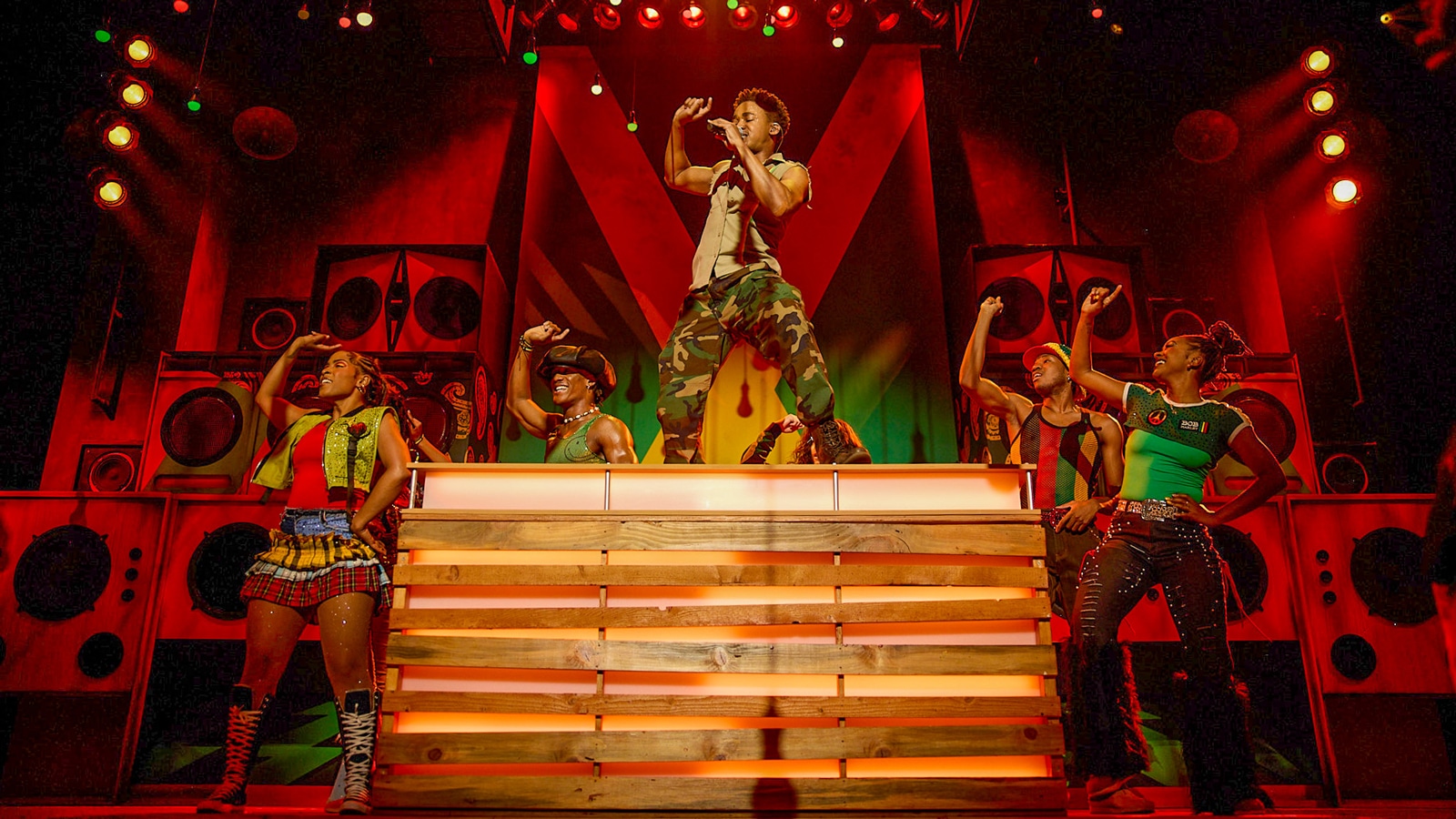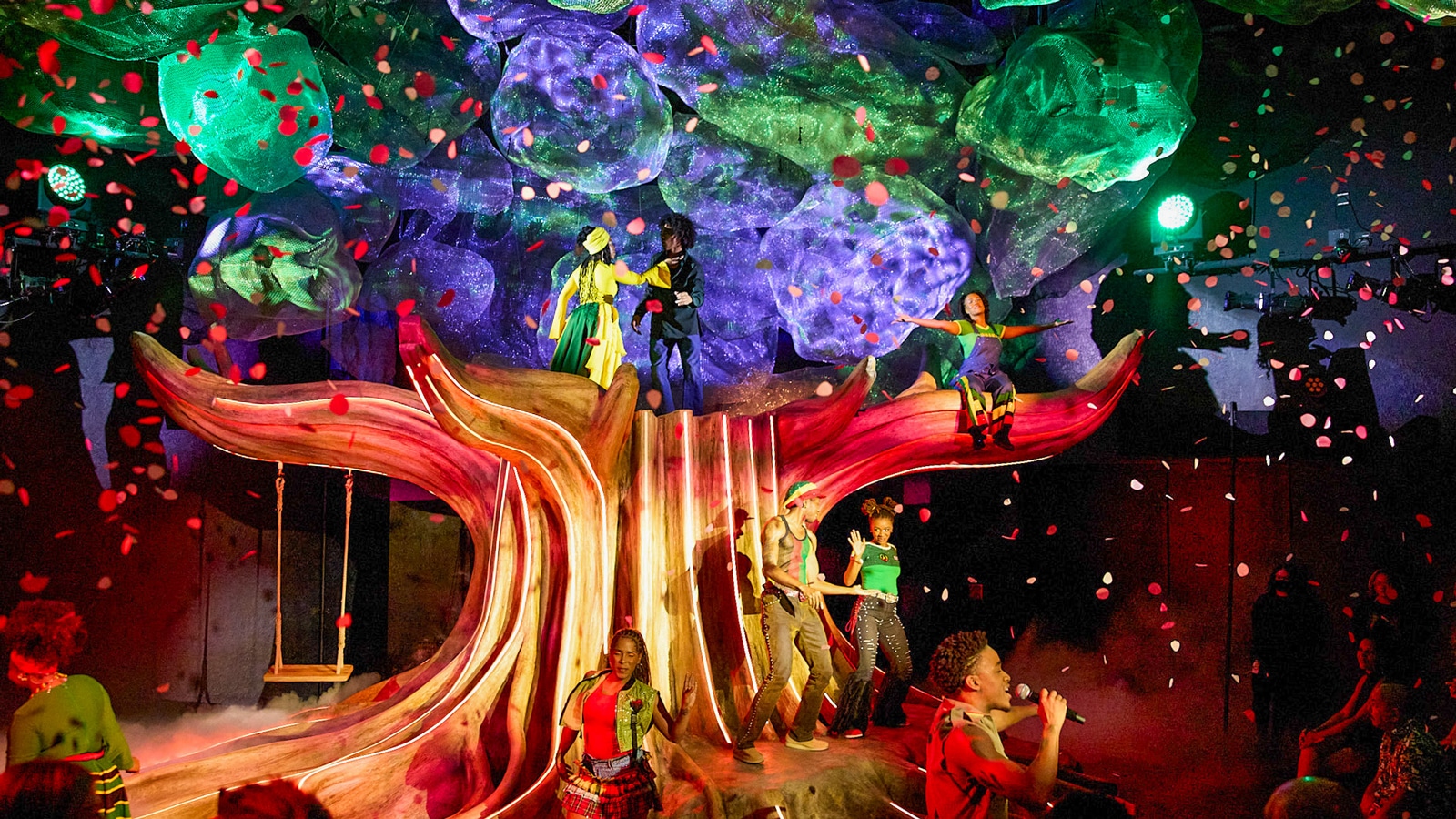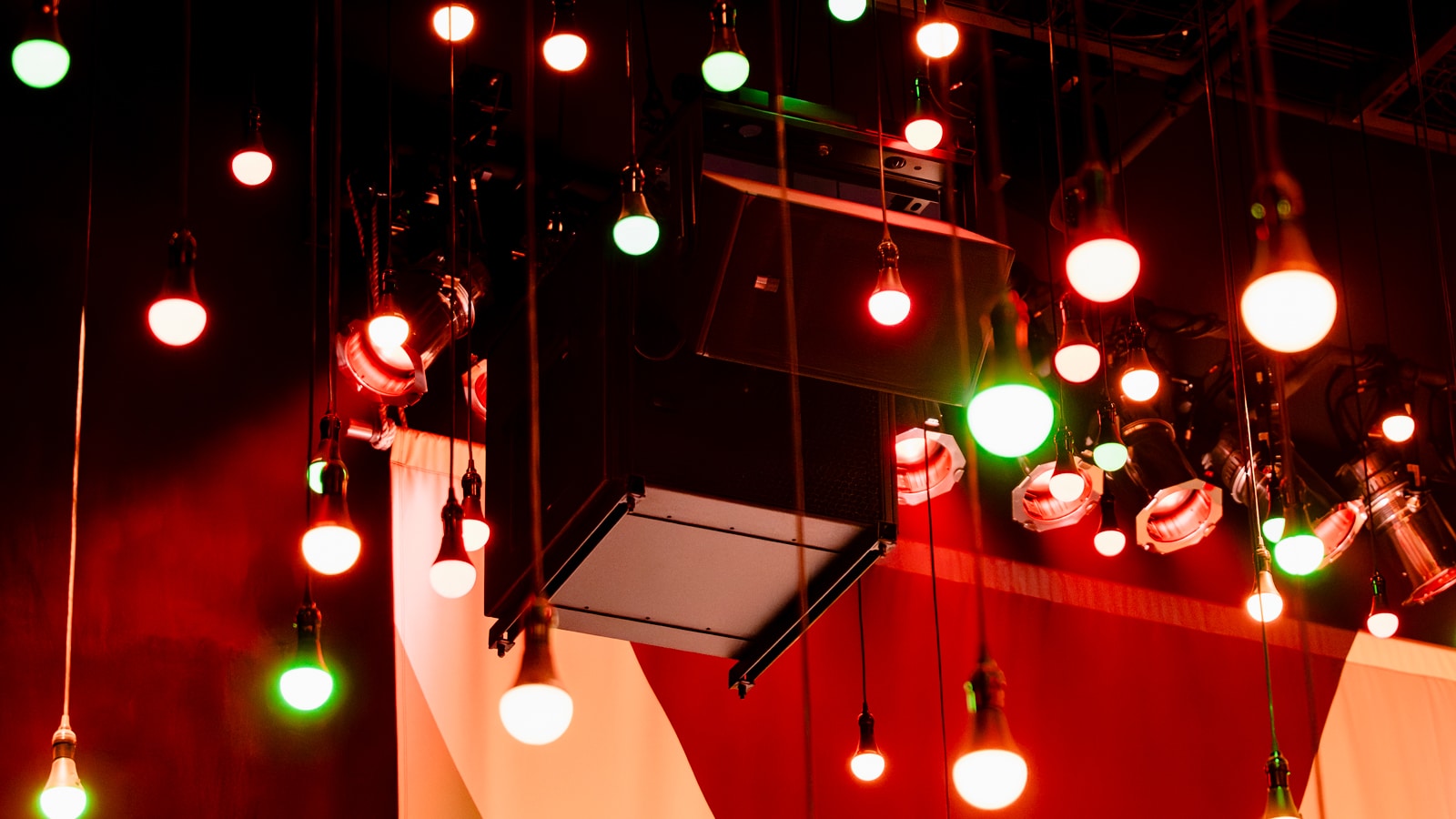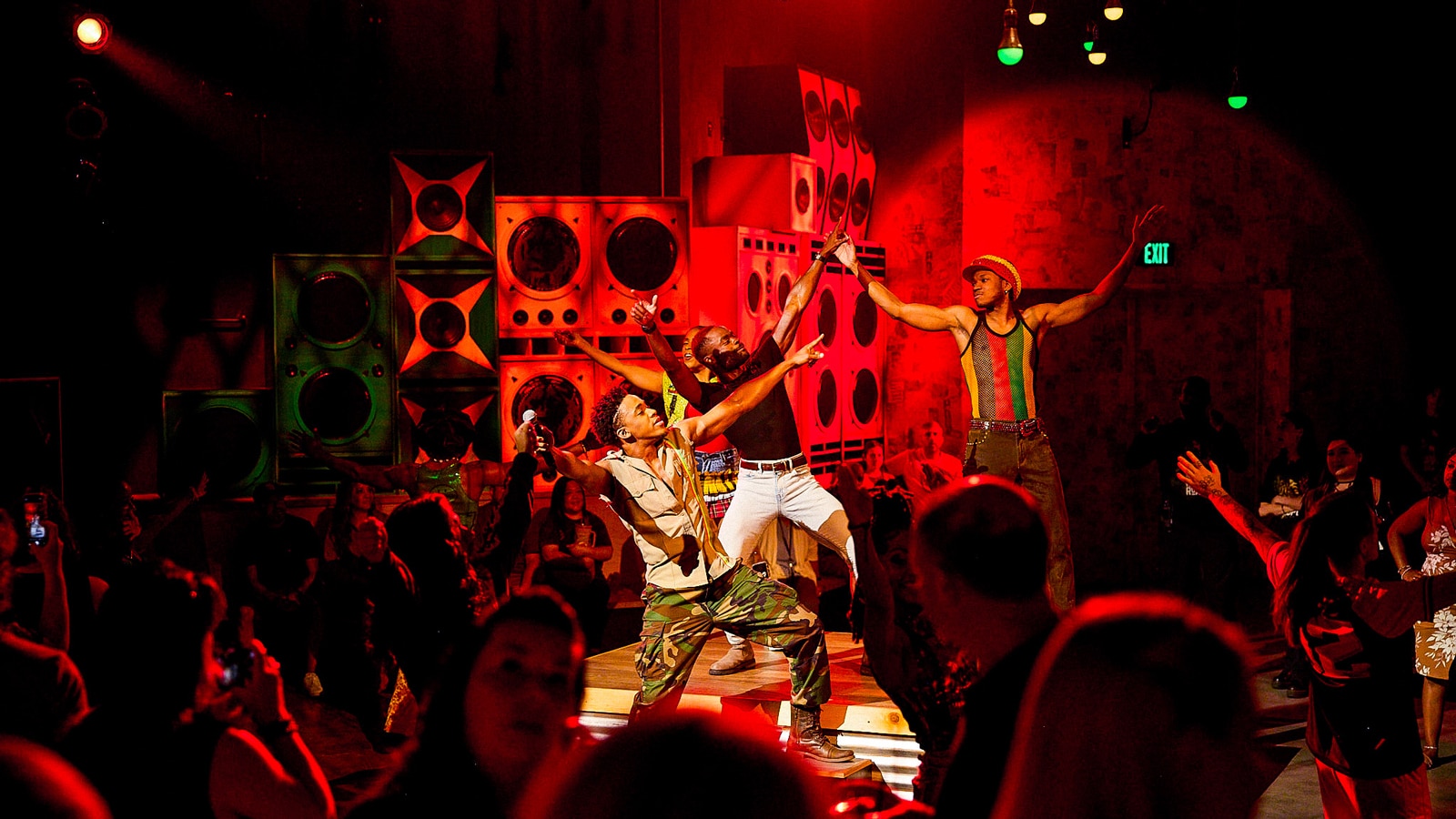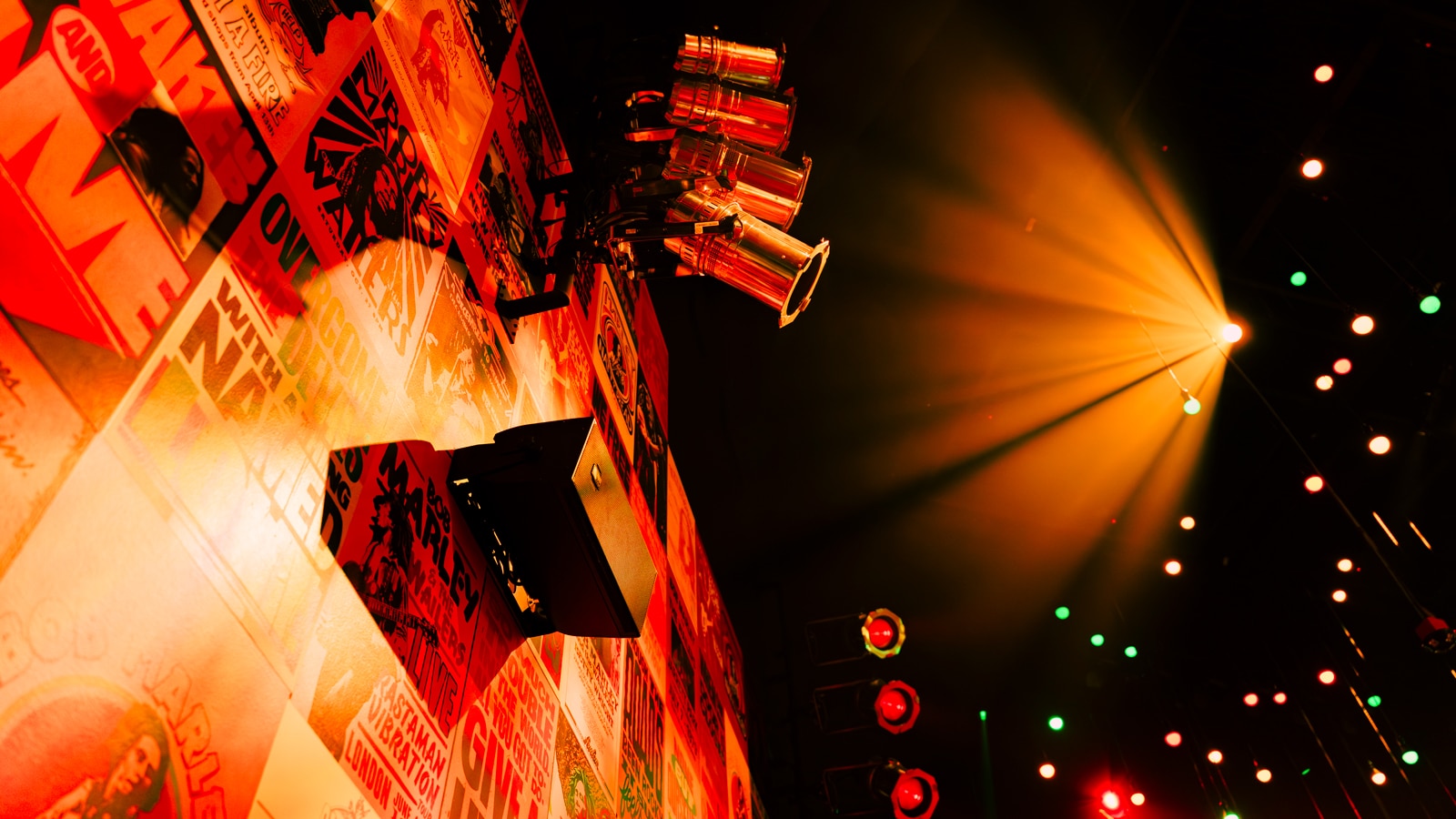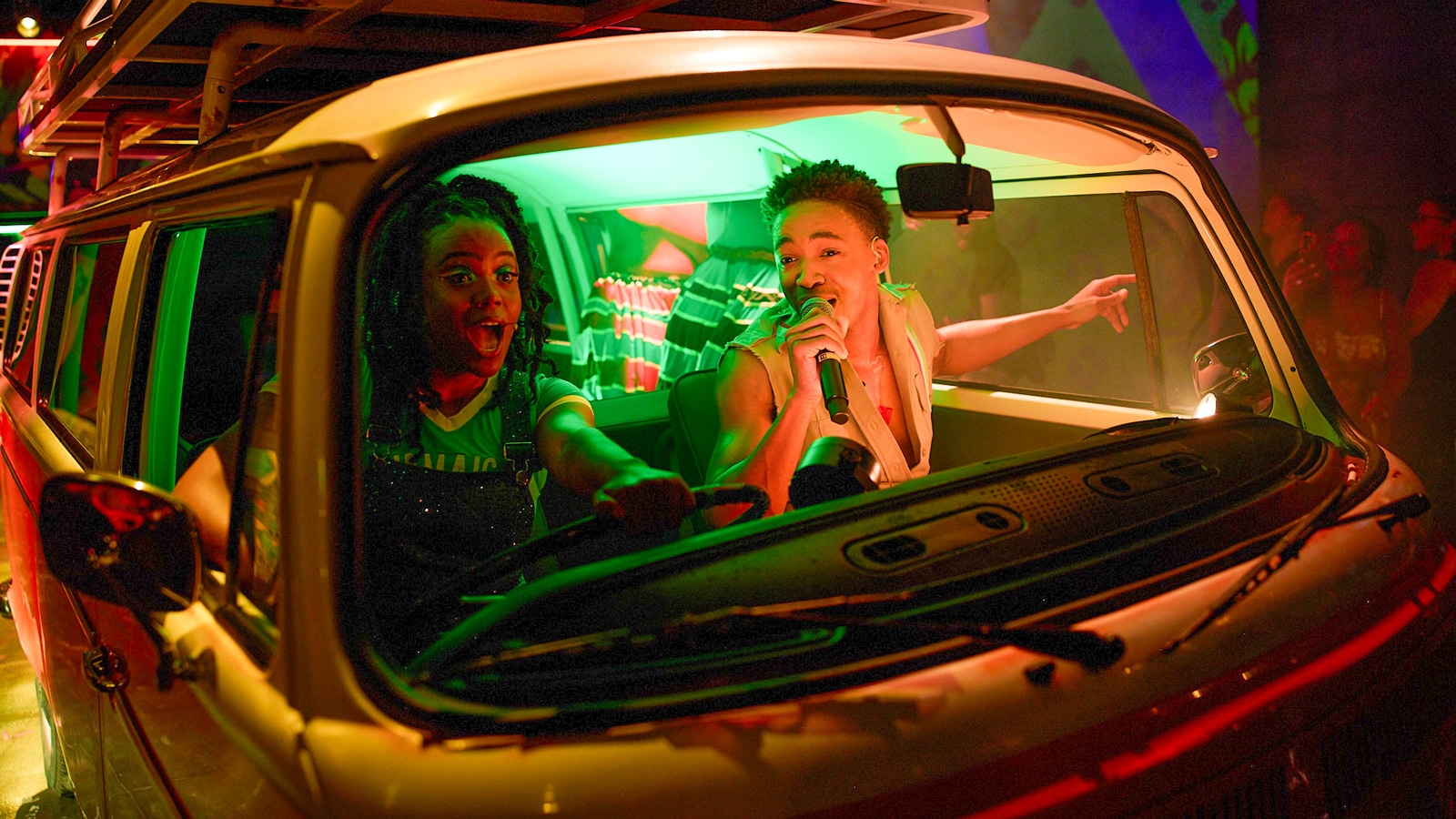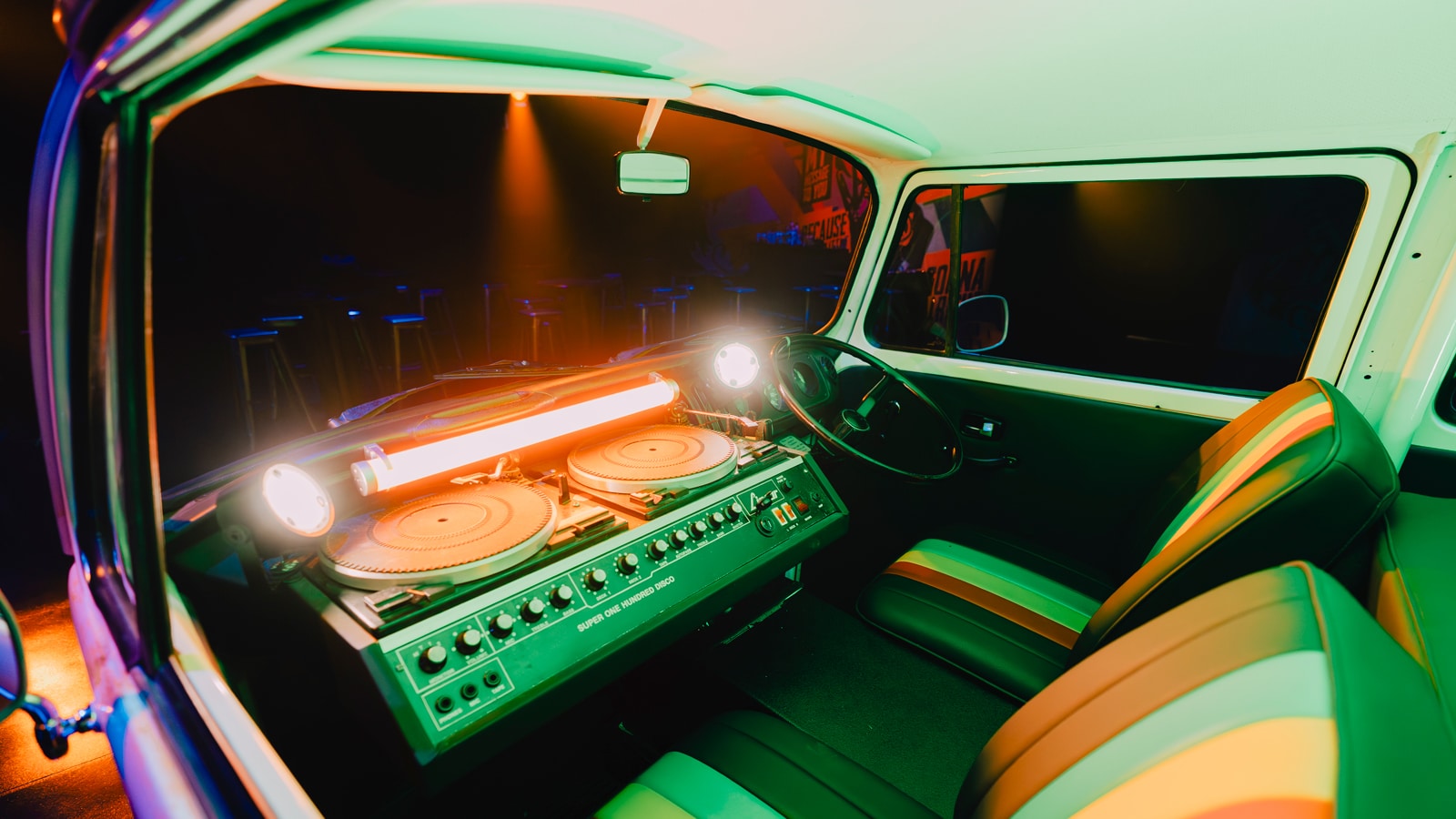I know where all the speakers are, and not once during the show was my attention ever attracted. The Meyer Sound gear is so transparent and neutral that it disappears into the environment and lets you focus on the artist, the singing, and the dancing—which is always the goal.”
Andrew RutkinVice President of Engineering,
Tech West Group
Bob Marley: Hope Road at Mandalay Bay in Las Vegas, NV brings the reggae legend’s story to life in a groundbreaking new show that blends music, dance, live performance, and visuals. With six interconnected spaces and constantly shifting audiences, the production requires a sound system that can deliver impact while disappearing into the storytelling. To meet that goal, veteran sound designer Jason Pritchard and integrator Technology West Group turned to Meyer Sound.
Serving as both sound designer and consultant on the project, Pritchard ensured the technology aligned with the creative vision. “I am the sound designer, and I am also the consultant for the construction aspects of the production,” he says. “I put everything on paper so that it could get bid and built and coordinated with electrical and HVAC and space planning and all of those elements.”
That dual role proved essential when the original concept for the show shifted after structural limitations of the former buffet space forced a rethink. “It went from one sound system for me, and one main sound system with a couple little auxiliary elements, to six sound systems in five rooms,” he explains.
A compressed time frame introduced more challenges, says Technology West Group Vice President of Engineering Andrew Rutkin. “It was literally a six- to nine-month project that we had three months to do.” That schedule pressure shaped every decision, making the choice of Meyer Sound pivotal. “First of all, the speakers sound fantastic,” Pritchard says. “Knowing that we were going to be on a tight schedule and the P.A. just has to work … Meyer Sound just sounds so good out of the box. It requires very little additional adjustment to get it to be the baseline where we can start putting our show in it.”
The Meyer Sound distributed system supplied by Tech West includes 29 ULTRA‑X23 compact point source loudspeakers, 15 ULTRA‑X40 compact point source loudspeakers, and two ULTRA‑X20 compact point source loudspeakers, along with two MM‑4XP miniature self-powered loudspeaker and five USW‑112P compact subwoofers.
In reggae, the low end carries both the groove and the weight of the message, and the Hope Road system design makes that tangible, with low frequencies reinforced by five 2100‑LFC low-frequency control elements and 15 900‑LFC compact low-frequency control elements. “In the first room, Dancehall, the 2100‑LFC is built right into the stage under the DJ platform, so you can stand literally next to it and feel that energy,” Pritchard says. “In the Cathedral room, it’s also sort of right in the audience. You really feel, when they’re doing ‘War,’ for example, like you’re right inside of it.” Rutkin agrees: “The Meyer Sound system has gotten nothing but raves, especially the 2100-LFCs as the subwoofers in the main performance spaces. It really brings out the emotional effects, especially in some of the more dramatic scenes towards the end of the show.”
One of Pritchard’s most creative integrations is a Volkswagen microbus in the Trenchtown room, outfitted with Meyer Sound speakers. Hidden ULTRA-X20 loudspeakers fire through the grille while a USW-210 compact narrow subwoofer sits inside the center console. “The bus has its own P.A., wireless systems, and everything,” he explains. “The ULTRA-X20 fires straight forward, and the USW-210 points down into the floor. It needs to blow your socks off—and it does.”
The finale showcases a massive 3D LED video wall paired with an audio design inspired by Meyer Sound’s Ultra Reflex screen channel sound system for direct view displays. “When Bob starts singing, his voice comes from the center of the screen,” Pritchard says. “It tricks your brain into thinking sound is coming from a place where there isn’t a speaker.”
The entire multiroom system is managed through two Galileo GALAXY 816 network platforms and Meyer Sound’s NADIA integrated digital audio platform. NADIA essentially serves as the show’s backbone, managing playback, routing, and partitioning resources across multiple rooms. “NADIA is doing a bunch of jobs for us,” says Pritchard. “It’s handling the routing for everything. We’re also using Wildtracks for all of the music playback and sound effects in each room … we are able to partition things into resources for Dancehall, Jamming Tree, and Trenchtown to keep cue lists separate and to keep all the players separate. It’s very nice to have a single system we can divide into the pieces that we need.”
That flexibility also extends to mixing and operations. “All the live microphones are being handled with an Allen & Heath D-Live console,” he continues. “There’s one D-Live engine and we’ve got a control surface in each room. That allows five front-of-house positions plus iPads.”
Working within a cohesive Meyer Sound ecosystem has allowed the team to adapt the system as the installation evolves. “The show intent morphs as we go along,” Pritchard says. “That is where NADIA and the whole Meyer Sound infrastructure, AVB and Milan, really help us. We are able to move things around, adjust all the timings, adjust the levels, adjust the EQ very quickly and get the show back rolling the way they want it to be.”
For Rutkin, success means the audience never thinks about the system. “I know where all the speakers are, and not once during the show was my attention ever attracted. The Meyer Sound gear is so transparent and neutral that it disappears into the environment and lets you focus on the artist, the singing, and the dancing—which is always the goal.”

